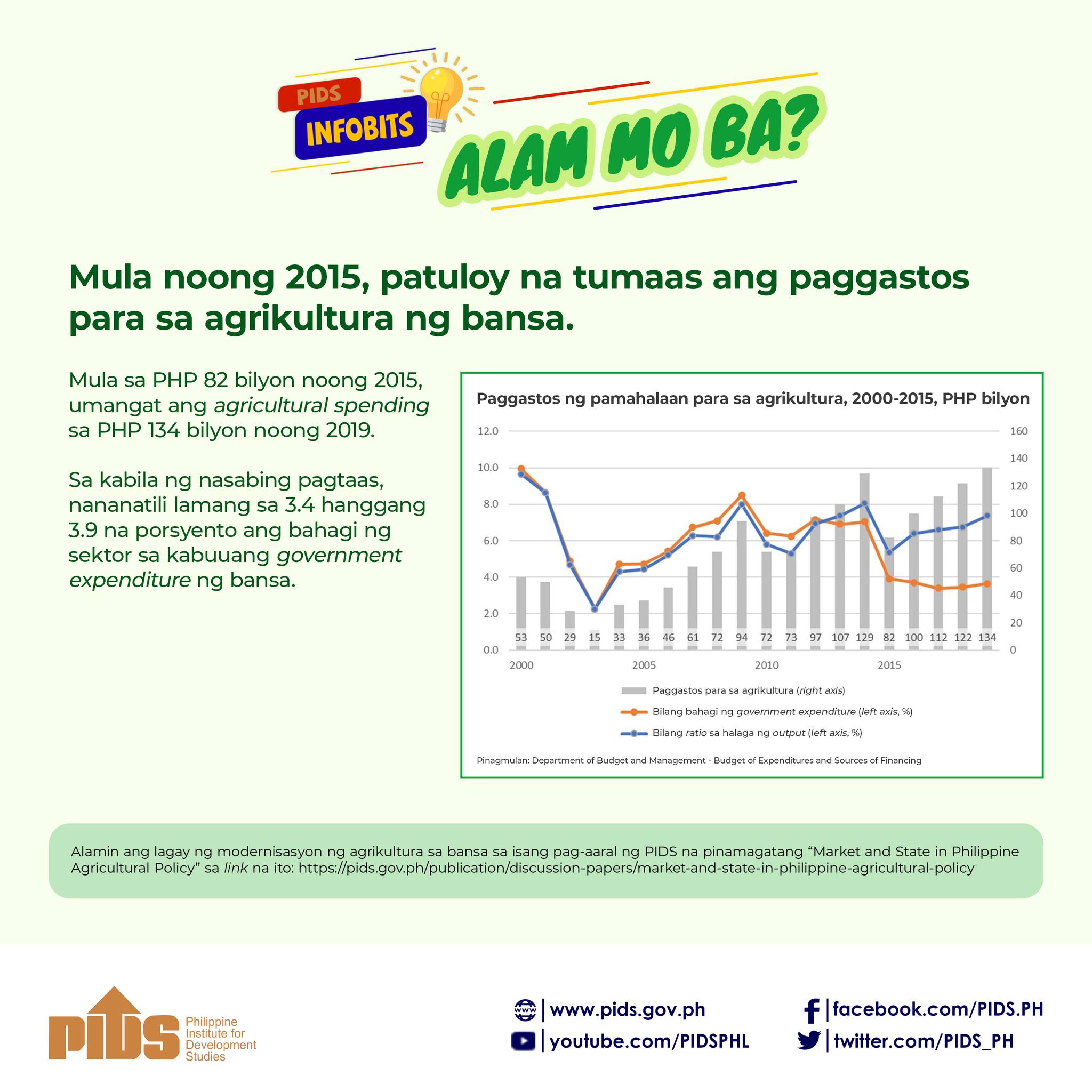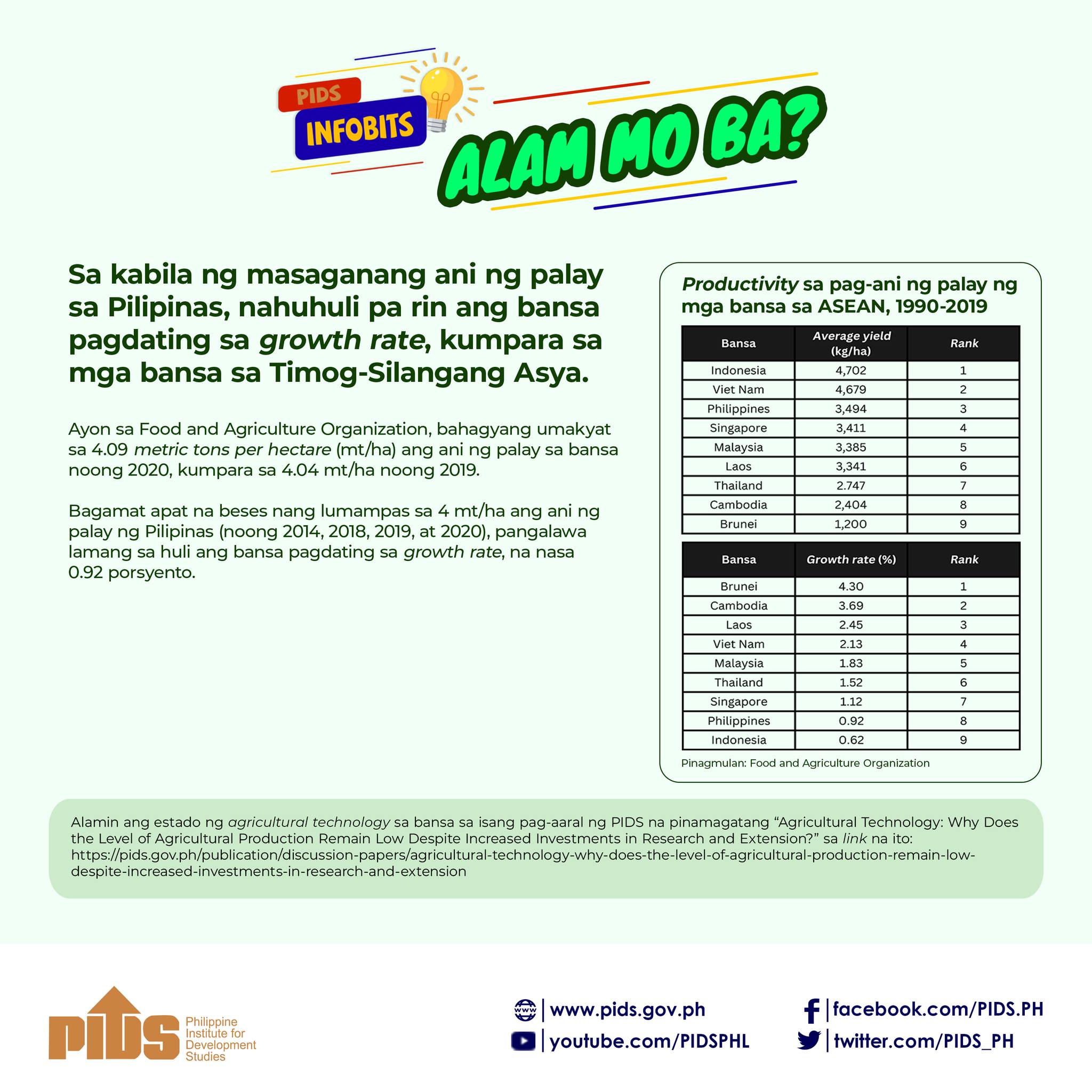THE PHILIPPINES’ overall agricultural output likely contracted again in the second quarter, as production was affected by soaring prices of fuel and fertilizer, according to analysts.
“It will likely contract. The situation now is that it will get worse before it gets better. We have to make up for practically six years, especially the last three years where production really declined as producers were discouraged to produce, plant or tend to livestock,” Samahang Industriya ng Agrikultura Executive Director Jayson H. Cainglet said in a phone call interview.
In the first quarter, the value of production of the farm sector — which contributes around a tenth to the country’s gross domestic product (GDP) and a fourth of jobs at constant 2018 prices — contracted by 0.3%.
Agriculture output also shrank by 1.5% in the second quarter of 2021.
Retired Pampanga State Agricultural University professor Roy S. Kempis projected that agricultural output would be flat in the April to June period.
“A positive overall growth is possible but this will still remain flat, closer to a number in the range of -0.3% to +0.8%,” he said in a Viber message.
Federation of Free Farmers (FFF) National Manager Raul Q. Montemayor said in a Viber message that production likely declined due to the high prices of fuel and fertilizer and the delay in the government’s assistance for farmers.
He noted fertilizer prices have also doubled since the start of the Russia-Ukraine war in late February.
Global oil and wheat prices have surged, while fertilizer supply has been disrupted by the ongoing war.
The Philippines imports most of its fertilizer needs.
Roehlano M. Briones, a senior research fellow at the Philippine Institute for Development Studies said the agriculture sector likely saw continued weakness in the second quarter, particularly in the crop and fisheries sector.
“(There is) a potential contraction in crops mainly due to high fertilizer prices and in fisheries amid higher fuel costs,” he said in a Viber message.
As of Aug. 2, year-to-date total adjustments for gasoline stood at a net increase of P19.65 per liter for gasoline, P32.35 per liter for diesel and P27.30 per liter for kerosene.
Mr. Kempis noted crops production may have had a “positive growth performance” in the second quarter. “Fisheries may find a hard time lifting itself from negative territory because capturing fish is more fuel-intensive,” he said.
Poultry production also likely declined as the industry is still recovering from avian influenza or the bird flu outbreak.
“Poultry is a boom and bust. What is significant in the second quarter is avian flu and the continuing imports,” Mr. Cainglet said.
In March, the Department of Agriculture (DA) suspended the movement of domestic and captured wild birds and poultry products as a precaution. The disease was detected in duck and quail farms in Bulacan and Pampanga, respectively. Additional cases were also confirmed in Laguna and Camarines Sur, according to the DA.
Mr. Cainglet said that rising input costs likely hampered poultry production as well.
“In poultry, feeds (comprised) 50% of the cost of production. Fuel and feeds rose, so that impacted production. Everything got more expensive, even day-old chicks. That’s the situation. We won’t be able to reach the same growth (as the first quarter). It might even drop and turn negative,” he added.
In the first quarter, poultry production increased by 12.3%, the only bright spot in the agriculture sector’s performance.
On the other hand, the hog sector may have rebounded in the second quarter, as it recovers from the African Swine Fever (ASF) outbreak.
“There may be some improvement in livestock as the worst of ASF may be over,” Mr. Briones said.
Mr. Kempis noted good weather may have helped boost livestock production.
“With better weather during the second quarter, the livestock sector can possibly leave negative territory and will register a positive growth,” he added.
According to the latest bulletin by the DA, active cases of ASF were reported in only two regions.
The PSA is scheduled to release its second-quarter report for agriculture output on Aug. 8.












